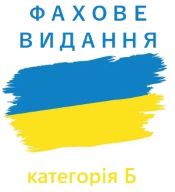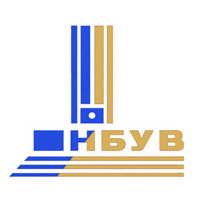An organization of the virtual intellectual laboratory works
DOI:
https://doi.org/10.31498/2225-6733.38.2019.181493Keywords:
virtual laboratory work, didactic efficiency, automatic evaluation, teacher’s work in class, mathematical modelAbstract
A method of organizing virtual laboratory work is proposed where it is assumed to acquire skills of work with complex equipment or with a complex of industrial facilities from the control panel. In such cases, real laboratory equipment is very expensive and can be easily damaged. The purpose of the method is to increase the didactic effectiveness of teaching, to provide automatic evaluation of the student’s work, to reduce the teacher’s work in class, to reduce the cost of laboratory equipment and to eliminate the risk of equipment damage. In compliance with this method each student works according to his own variant which forms a mathematical model of the studied object or process and the correct results that should be obtained after the laboratory work has been completed. All the actions of the student are controlled by a computer in order to prevent malfunctions in the mathematical model and to guide the learning process. If the student’s action is correct, it is transferred to the mathematical model. If the action is incorrect, it is ignored and the corresponding information is transmitted to the message base and explanation base. Here, the computer selects a message for the student which explains the incorrect action. The student takes the necessary measurements, processes them and receives the final results. The computer compares them with the correct results. If the error of mismatch between the student’s and the computer’s results exceeds a critical level these results are not accepted. If the error is below the critical level, these results are accepted and evaluated. After the work has been completed the final mark is recorded in the student’s registration fileReferences
Список использованных источников (ГОСТ):
Электроника и электротехника : Учебные ресурсы для студентов и преподавателей. Моделирование электрических цепей и электронных схем в программе TINA / Сост. В.А. Алехин [Электронный ресурс]. – Режим доступа: http:/www.toe-mirea.ru/video.html.
Электротехника и электроника : Методическая разработка к лабораторному практикуму по курсу / Сост. М.Ю. Маслов, В.А. Ружников, Д.В. Скачков [Электронный ресурс]. – Режим доступа: http://window.edu.ru/ resource/910/76910/files/eielabs.pdf.
Пат. 2523180С1 Российская Федерация, МПК G 06 Q 50/20, G 06 N 5/00, G 09 B 23/28. Способ оценки правильности действий обучаемого трансфеморальной аортографии с использованием виртуального компьютерного тренажёра / А.В. Колсанов, Б.И. Яремин, Н.В. Сапцин. – № 2012156116/08; заяв. 24.12.12; опубл. 20.07.14, Бюл. № 20. – 3 с.
Гаркуша Г.Г. Интеллектуальное компьютерное приложение «виртуальная интерактивная лекция» / Г.Г. Гаркуша, А.Н. Зиновченко // Вісник Приазовського державного технічного університету : Зб. наук. пр. / ДВНЗ «ПДТУ». – Маріуполь, 2015. – № 31. – С. 203-209. – (Серія : Технічні науки).
References:
Alekhin V.A. Elektronika i elektrotekhnika: Uchebnye resursy dlia studentov i prepodavatelei. Modelirovanie elektricheskikh tsepei i elektronnykh skhem v programme TINA (Electronics and Electrical Engineering: Learning Resources for Students and Teachers. Modeling electrical circuits and electronic circuits in the program TINA) Available at: http:/www.toe-mirea.ru/video.html (accessed 15 January 2019). (Rus.)
Maslov M.Iu., Ruzhnikov V.A., Skachkov D.V. Elektrotekhnika i elektronika: Metodicheskaia razrabotka k laboratornomu praktikumu po kursu (Electrical Engineering and Electronics: Methodological development for a laboratory workshop on the course) Available at: http://window.edu.ru/ resource/910/76910/files/eielabs.pdf (accessed 05 Fabruary 2019). (Rus.)
Kolsanov A.V., Iaremin B.I., Saptsin N.V. Sposob otsenki pravil’nosti deistvii obuchaemogo transfemoral’noi aortografii s ispol’zovaniem virtual’nogo komp’iuternogo trenazhera [A method for evaluating the correctness of the actions of a trained transfemoral aortography using a virtual computer simulator]. Patent RU, no. 2523180С1, 2014. (Rus.)
Garkusha G.G., Zinovchenko A.N. Intellektual’noe komp’iuternoe prilozhenie «virtual’naia interaktivnaia lektsiia» [Intelligent computer application «Virtual interactive lecture»]. Vіsnik Priazovs’kogo Derzhavnogo Tekhnіchnogo Unіversitetu. Serіia: Tekhnіchnі nauki – Reporter of the Priazovskyi State Technical University. Section: Technical sciences, 2015, no. 31, pp. 203-209. (Rus.)
Downloads
How to Cite
Issue
Section
License
The journal «Reporter of the Priazovskyi State Technical University. Section: Technical sciences» is published under the CC BY license (Attribution License).
This license allows for the distribution, editing, modification, and use of the work as a basis for derivative works, even for commercial purposes, provided that proper attribution is given. It is the most flexible of all available licenses and is recommended for maximum dissemination and use of non-restricted materials.
Authors who publish in this journal agree to the following terms:
1. Authors retain the copyright of their work and grant the journal the right of first publication under the terms of the Creative Commons Attribution License (CC BY). This license allows others to freely distribute the published work, provided that proper attribution is given to the original authors and the first publication of the work in this journal is acknowledged.
2. Authors are allowed to enter into separate, additional agreements for non-exclusive distribution of the work in the same form as published in this journal (e.g., depositing it in an institutional repository or including it in a monograph), provided that a reference to the first publication in this journal is maintained.









